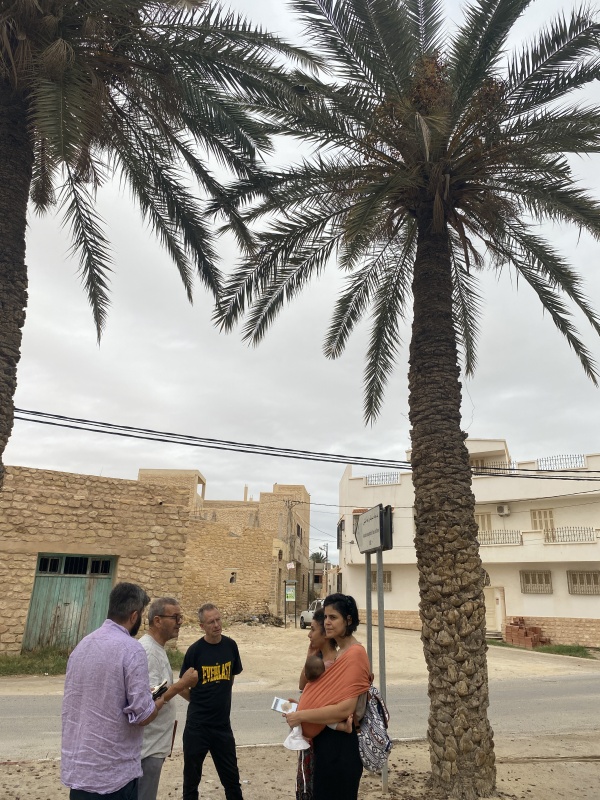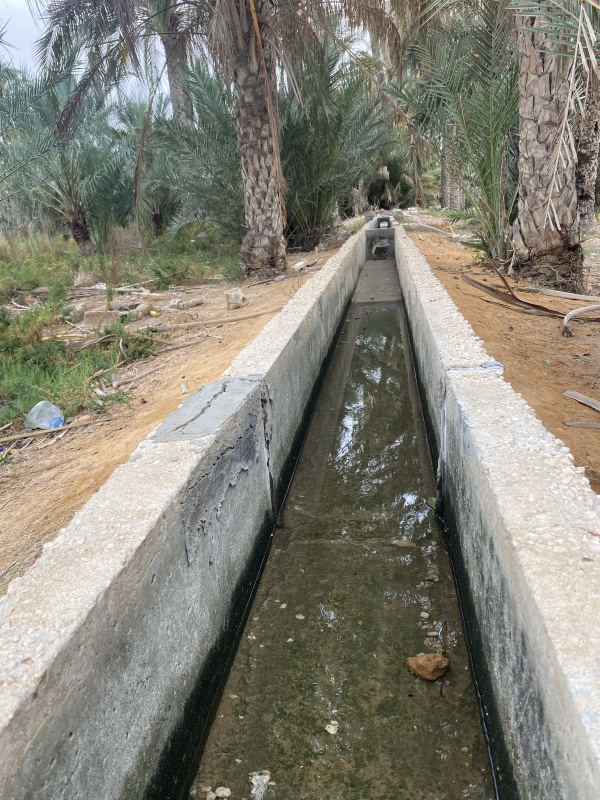Do trees dream of CO2? Research residency / Tunisia
From septmeber 30th to October 7th 2024 Tunis / Gabes, Chenini oasis / SousseA residency in collaboration with Per Hüttner, the project's partner; at the invitation of Hela Lamine, artist and teacher at the Sousse School of Fine Arts, in collaboration with Soufia Ben Saïd, performance artist.
The project revolves around the date palm and the traditional consumption of its fresh sap, lebmi.
As part of the initial scouting, we fitted some palm trees with the pépipiaf, to see if this tool for measuring variations in branch expansion, originally designed for trees, could work on palms.
The initial tests in Héla Lamine's garden workshop were conclusive, and we then set off for Gabes, the gateway to the desert.
Gabes is an industrial town by the sea, where intensive phosphate extraction is a complex site. There are many environmental issues at stake, not least the increasing scarcity of fresh water and its pollution. The production of phosphoric acid generates a waste product known as phosphogypsum, which contains uranium, lead, polonium and radium, among other substances. At Gabès, all the phosphogypsum is discharged into the Gulf via an open canal. Mixed with seawater, it forms "gypsum sludge". The freshwater is monopolised by this industry, which draws on the aquifers Today, farmers are forced to pump water, or even bring it in containers to the gardens.
The Chenini oasis is one of the only maritime oases in the Mediterranean basin and one of the last in the world. A so-called "traditional" oasis, its agricultural system is organised around a three-tier structure: the tree layer, the shrub layer and the herb layer. The first level is represented by the date palm, which reaches heights of 15-30 metres and provides shade and coolness. The second, arboreal level is made up of trees, often fruit trees such as mulberry, orange and pomegranate. The top tier is planted with vegetables, fodder and industrial crops (henna, tobacco, alfalfa). Palm trees, the first tier of the oasis agricultural structure, play a vital role in the smooth running of oasis agriculture. Planted around the edges of the plots, the palm's large size and the circumference of its trunk help to maintain humidity in the plots as well as "breaking the wind". What's more, its long palms filter the sun's rays, keeping the crops on the other levels in the shade and maintaining a certain coolness in summer. This phenomenon is known as the "oasis effect".
Palm sap is extracted in the traditional way and eaten fresh in the morning. First, the top of the palm tree is pruned with a sharp tool. Next, the centre of the palm tree is hollowed out to reach the soft core. Finally, the sap is collected, which flows through a cane cut in half, into a clay gargoyle or bucket placed at the top of the palm tree. This technique is learnt from generation to generation.
We met Mabrouk Jerbi, a member of the oasis protection association, and Hammadi Nibili, a farmer. Hammadi welcomed us to his garden, and we carried out a number of tests with the pépipiaf and sound sensors in situ, with the aim of putting on a public performance in the future. We also met Salah Madkali, who sows farm seeds in the oasis.
In response to our questions about the state of the garden and its plants as a result of the lack of fresh water and the gradual salinisation of the soil, Soufia Ben Saïd invited us to take on the role of various human and non-human actors during a constellation session.
We ended our stay with a presentation of our research to the Masters students at the Sousse School of Fine Arts.
sources
https://ftdes.net/le-systeme-oasien-de-gabes-un-tresor-agricole-millenaire-menace/
https://reporterre.net/En-Tunisie-le-phosphate-a-saccage
https://helalamine.com/
https://soufiabensaid.com/about/
http://www.visionforum.eu/co2/









